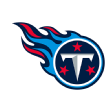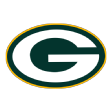In 12 starts as a rookie last season, Bears quarterback Mitchell Trubisky tossed just seven touchdown passes and registered a 29.2 Total QBR, which ranked 29th in the NFL. It was a severely limited offense under former coordinator Dowell Loggains, and Chicago had one of the league’s worst passing offenses.
With new coach Matt Nagy and coordinator Mark Helfrich installing a system that will cater more to the modern quarterback and the Bears adding weapons in free agency, however, Trubisky is in a position to take a major step forward in 2018.
Let’s break down why the Bears’ new system and personnel upgrades are a boost for Trubisky while also discussing nine more second-year players who can make the leap in 2018.
Here is my list of potential breakout studs — not rookies who already had stellar 2017 seasons, such as the Saints’ Marshon Lattimore and Alvin Kamara — to keep an eye on:
Five who could make significant jumps
That 2017 Bears offense didn’t scare teams, and Chicago didn’t have the targets in the passing game to create stress for opposing secondaries. Load the box and play man coverage. Defenses could keep it simple.
Despite passing for more than 200 yards in just three of those 12 starts, however, Trubisky showed flashes of his athleticism and arm talent. He showed the ability to anticipate throwing windows. And with Nagy & Co. installing a system that will better cater to Trubisky’s talent, the arrow is pointing up on the former No. 2 overall pick.
During free agency, the Bears added a top target for Trubisky in wide receiver Allen Robinson, who’s a technician in the route tree with the ability to make plays over the top and produce in the red zone. The former Jaguar, who tore an ACL in Week 1 last season, racked up 18 red zone touchdowns from 2015 to 2016. Tight end Trey Burton is the new “move” guy in Nagy’s offense, a matchup piece who can align in multiple spots. And wide receiver Taylor Gabriel brings some real speed to Chicago with the change-of-direction skills to break down defenses in the open field.
These are major upgrades for Trubisky compared to the lineup he worked with last season, and Nagy’s offense — a modern twist on the West Coast passing game — should jump-start Trubisky’s development. Just look at Jared Goff and the Rams hiring Sean McVay as a potential blueprint.

Mixon entered the league with the most raw talent of the 2017 running back class, in my opinion, with the power, speed and ability to impact the passing game. And we saw those traits pop on the film at times as Mixon rushed for 626 yards and added 287 yards receiving while sharing touches. With veteran Jeremy Hill leaving via free agency and the Bengals making a move to land offensive tackle Cordy Glenn in a trade with Buffalo, Mixon is in line to see an increased workload behind a better offensive line.
Mixon carried the ball 15 times or more in six games and had more than 20 carries in two games. He can handle high-volume touches, and he has the ability to rip off chunk gains on the ground or as a receiving target on screens and underneath throws. After showing some hesitation early in the season when working through the wash to find daylight, he hit the hole with more speed as the season progressed. The upside is there if the Bengals can develop more consistency up front in 2018.

McKinley’s energy level jumps out on tape. This guy plays hard on the edge. He’s s a relentless pass-rusher who produced six sacks while playing 381 snaps in a rotational role on the Falcons’ defensive line.
But when we look ahead to 2018 and the uptick in snaps McKinley should see after defensive end Adrian Clayborn left in free agency, I expect the former UCLA star to elevate his game as a pass-rusher with more technique at the point of attack.
For the majority of edge rushers in the league, that developmental jump comes in their second seasons. With tape to study, and game reps to lean on as teaching tools, this is when we see real growth in counter moves and the ability to set up offensive tackles. McKinley already has displayed the burst to get off the ball — and his motor never stops. Now, add in the core fundamentals to pair with that 4.59-second 40 speed on the edge? Look out. McKinley is in a spot to boost his profile as one of the top young edge defenders in the NFL.

Limited to just 11 games due to injury, Davis caught 34 passes for 375 yards and didn’t reach the end zone during the regular season. If you watch the Week 16 tape against the Rams or take a look at his two touchdown grabs in the divisional-round playoff loss to the Patriots, however, Davis looked much improved. He has the frame (6-foot-3, 209 pounds), body control and big-play talent to produce consistent numbers in 2018 as the Titans transition to new coordinator Matt LaFleur’s system.
Davis can run deep in-cuts and win on isolation routes, and he has the footwork to set up defensive backs, as he displayed on this double move to beat Patriots cornerback Malcolm Butler for six points. Plus, Tennessee’s 2018 offensive system will create more opportunities for Davis, with LaFleur putting quarterback Marcus Mariota in a better position to attack throwing windows. Lots of movement, stack and bunch to get receivers open in the route tree. And with that size at the catch point, Davis should become one of Mariota’s top red zone targets.

When free agency opened, the Chiefs surprisingly paid a premium price to land wide receiver Sammy Watkins. But when we look at the Kansas City offensive system under coach Andy Reid, Watkins is yet another weapon — in an offense loaded at the skill positions — to build around Mahomes. And the young quarterback brings the big-time arm, the ability to make off-schedule plays and the movement skills that mesh with Reid’s playcalling.
Mahomes got one start as a rookie, in Week 17 against the Broncos, completing 22 of 35 passes for 284 yards and an interception. But this is much more about projecting Mahomes’ talent base while he’s surrounded by a core group of weapons in Watkins, Tyreek Hill, Travis Kelce and Kareem Hunt. The Chiefs’ creative system will feature the West Coast route tree, play-action, run-pass options and even some QB-designed runs for Mahomes, and he has players around him who will get open.
When the Chiefs traded up to get Mahomes in the 2017 draft and then traded away veteran Alex Smith this offseason, it was easy to see they were going all-in on the Texas Tech product. And the skill set is there, along with the system fit, for Mahomes to play big on the pro stage in his first year as an NFL starter.
The next five

After snatching two touchdown catches in Week 1, Golladay battled through injuries and was limited to 11 games as a rookie, finishing with 28 receptions for 477 yards and 3 scores. The NIU product averaged 17.0 yards per catch and produced six receptions of more than 30 yards.
He has the frame (6-4), speed (4.50 40 at the combine) and ball skills to get into the end zone. With new coach Matt Patricia retaining offensive coordinator Jim Bob Cooter, look for Golladay to settle in as the No. 3 option behind Golden Tate and Marvin Jones in the Lions’ three-wide receiver personnel.

King had some up-and-down moments as a rookie. But he has the size/length/speed combo (6-3, 200 pounds) to elevate under new defensive coordinator Mike Pettine, and he already has shown the ability to play press-man coverage and the physicality to challenge routes.
Think more man coverage where King can get up in the grill of opposing wide receivers and track the ball like he did on his college tape at Washington. The talent is there. And so is the toughness. King will play hurt and tackle, and he’s a solid fit for Pettine and a Green Bay defensive identity that needs to change after Dom Capers, who had been in charge of the unit since 2009, was fired.

Cohen checked in with 723 yards from scrimmage and three scores in 2017, coming on 87 rushes and 53 catches. But Cohen’s electric talent wasn’t fully exploited — he didn’t see the consistent touches or scripted matchups I expected to see.
Look for that to change in Nagy’s system. Cohen can be the joker in the offensive game plan, a chess piece to expose opposing defenses. Along with his ability as a zone runner, Cohen can be featured on jet sweeps, misdirection plays and screens. He can be flexed out from the formation as a receiver. With a 5-6, 181-pound frame, Cohen can put defenders on skates in the open field.

Due to a Lisfranc injury, Allen played in only five games and had 10 total tackles and a sack. But the former Alabama star showed us glimpses of his athleticism and plus-technique.
Allen has the traits of a veteran when he rushes, showing lane discipline and the hands to win on contact. Plus, as a base defender, he has the strength to battle in the run game. Healthy again, I see a high ceiling for the former No. 17 overall pick heading into his second season as a key piece of the defensive front in Washington.

The fifth-round pick caught 43 passes for 515 yards with two scores as a rookie, but I expect improvement from the former Hawkeye in Year 2. Due to his fit in Kyle Shanahan’s offense as a versatile pass-catcher, Kittle could near the 60-catch mark in 2018.
With 4.5 speed, and the formation flexibility to bump into the slot, Kittle has the ability to work the middle of the field, catch the ball off play-action and serve as an inside matchup piece for quarterback Jimmy Garoppolo. Think of Kittle as a “move” tight end/H-back who can block in the run game and also slip out of the backfield to give Garoppolo a high-percentage target underneath.
